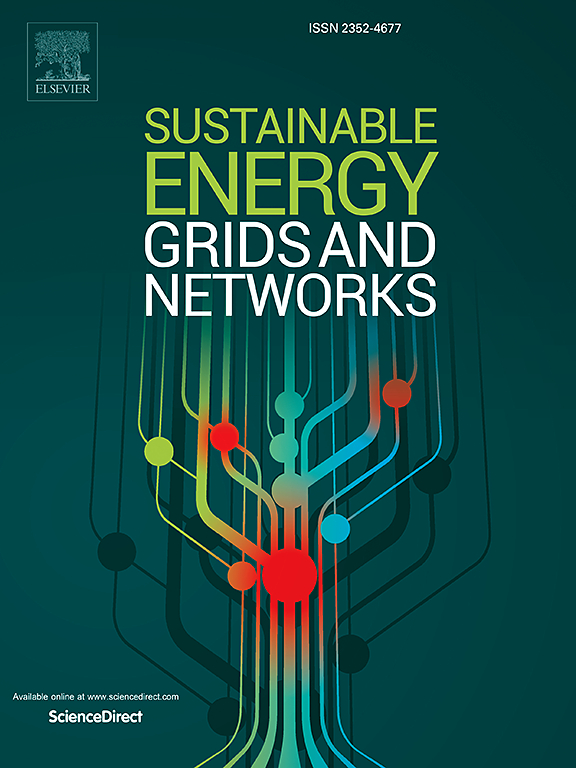负载峰谷形状聚类和漂移分析改进时间模式表示
IF 5.6
2区 工程技术
Q2 ENERGY & FUELS
引用次数: 0
摘要
负荷形态聚类是制定合理的电价设计和负荷管理以获得更经济可靠效益的重要基础。然而,现有的负载形状模式聚类方法主要集中在整个负载形状和各种聚类算法上,没有考虑负载形状的峰谷形状特征和分布漂移问题。因此,提出了峰谷形状模式聚类和日负载形状漂移测量来解决这一问题。为了准确地揭示峰谷用电行为,提出了负荷峰谷形状模型和混合距离测量,以获得更具代表性的峰谷形状分布更紧凑的时间模式。此外,提出了功率漂移和时间漂移两种测量模型,分析了日负载峰谷形状模式之间的显著漂移问题。结果表明,该方法不仅获得了DBI、WAS、CHI、SC和DI得分分别为0.5537、0.2633、502.3634、0.8872和1.4730的最佳聚类有效性分数,而且准确地获得了不同模式之间的时间漂移值,如两个峰值时间的最大向后偏移90和150 分钟,谷时间的最大向后偏移45和60 分钟。本文章由计算机程序翻译,如有差异,请以英文原文为准。
Load peak-valley shape clustering and drift analysis for improving temporal pattern representation
Load shape pattern clustering is an important foundation for developing appropriate tariff design and load management to achieve more economical and reliable benefits. However, the existing load shape pattern clustering methods mainly focus on the whole load shape and various clustering algorithms, which do not consider the peak-valley shape features and distribution drift issue of the load shapes. Therefore, peak-valley shape pattern clustering and drift measurement of daily load shapes are proposed to solve this problem. To accurately reveal the peak-valley electricity consumption behaviors, load peak-valley shape models and a hybrid distance measurement are proposed to obtain more representative temporal patterns that have more compact peak-valley shape distributions. Moreover, two measurement models for power drift and time drift are proposed to analyze the significant drift problem between daily load peak-valley shape patterns. The results showed that the proposed method outperformed other methods, as it not only achieved the best clustering effectiveness scores, such as DBI, WAS, CHI, SC, and DI scores of 0.5537, 0.2633, 502.3634, 0.8872, and 1.4730, respectively, but also accurately obtained the time drift values between different modes, such as the maximum backward shift of the two peak times by 90 and 150 minutes, and the maximum backward shift of the valley time by 45 and 60 minutes, respectively.
求助全文
通过发布文献求助,成功后即可免费获取论文全文。
去求助
来源期刊

Sustainable Energy Grids & Networks
Energy-Energy Engineering and Power Technology
CiteScore
7.90
自引率
13.00%
发文量
206
审稿时长
49 days
期刊介绍:
Sustainable Energy, Grids and Networks (SEGAN)is an international peer-reviewed publication for theoretical and applied research dealing with energy, information grids and power networks, including smart grids from super to micro grid scales. SEGAN welcomes papers describing fundamental advances in mathematical, statistical or computational methods with application to power and energy systems, as well as papers on applications, computation and modeling in the areas of electrical and energy systems with coupled information and communication technologies.
 求助内容:
求助内容: 应助结果提醒方式:
应助结果提醒方式:


